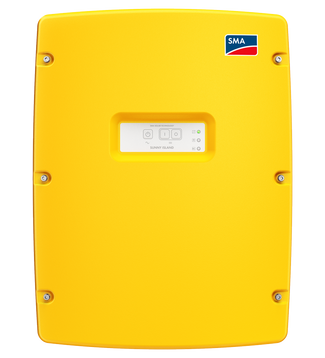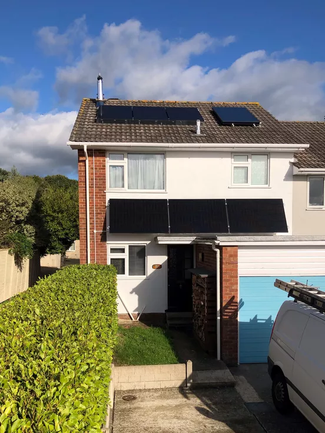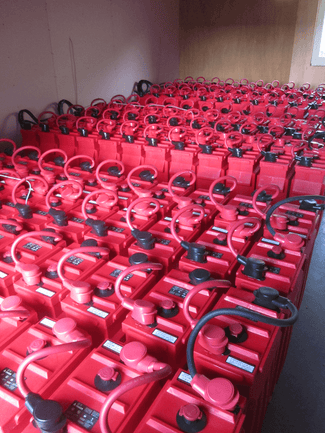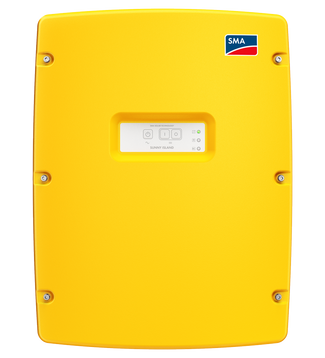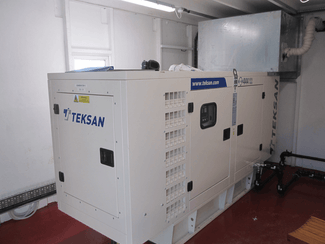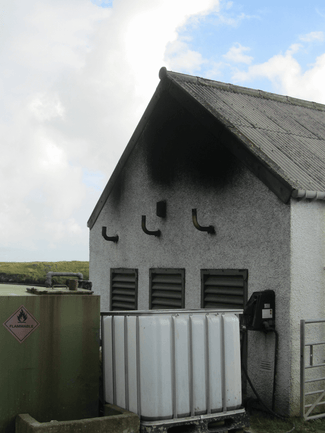DC Coupled Systems

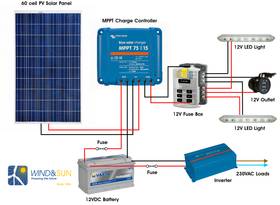
Here, all energy sources are coupled via Direct Current (DC). During the day, energy generated by the PV array can be used to run loads and any surplus is used to charge a battery. A DC charge controller is used to prevent the battery from overcharge. This stored energy is then available in the evening for operating lighting and other DC loads.
Alternating current (AC) loads in a DC coupled off-grid system can be run by using an additional small inverter.




AC Coupled Systems
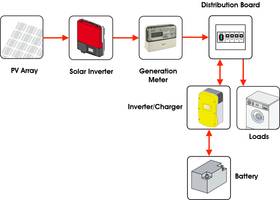
In an off-grid AC-coupled system, power generated by renewable resources, including PV arrays and wind or hydro turbines, is processed by grid-connect inverters connected to the AC-output of a battery based bi-directional inverter/charger.
AC Coupling has the following advantages compared to DC coupled off-grid systems
- Easy Planning – Modular Design
- Simple modular system configuration
- Generation can be located at long distances from the battery store
- PV installation the same as for grid-connected systems
- Cost effective integration of standard AC loads and power sources
- By connecting the energy sources on the AC side in parallel, the entire useable capacity is greater than the available inverter output
- Cost-effective AC cabling and installation material
- Easily expandable
PV power is first used to power the loads. When there is more PV power available than used by the loads, the power will automatically run through the inverter in reverse direction and charge the batteries. However, the situation can occur that when the battery becomes fully charged the PV power available from the PV system exceeds the power requirement of the connected loads, so it is still necessary to regulate that power to prevent overcharging the batteries. This is done by utilising 'frequency shift power control’.


Frequency-Shift Power Control (FSPC)
To prevent this excess energy from overcharging the battery, the battery inverter/charger recognises that batteries are fully charged and increases the frequency at its’ AC output. This frequency change is then detected by the PV inverter, which needs to respond to this so that they can limit their power generation accordingly.
Setting PV inverters to respond to frequency shift
PV inverters need to be configured to ‘stand-alone’ or ‘off-grid’ mode to allow them to respond to the frequency rise and reduce power proportionally. This is done by changing the anti-islanding settings in the inverter (eg G98 or G99) to enable this. For SMA PV inverters the appropriate setting is ‘SMA Island Mode 50Hz’. For Fronius PV inverters it is ‘MG 50’.
Any other AC coupled generation (eg. wind or hydro) must also be capable of doing the same.
SMA Sunny Island inverters
As soon as the power frequency increases beyond the value specified in fAC Start Delta, the PV inverter limits its output power accordingly.
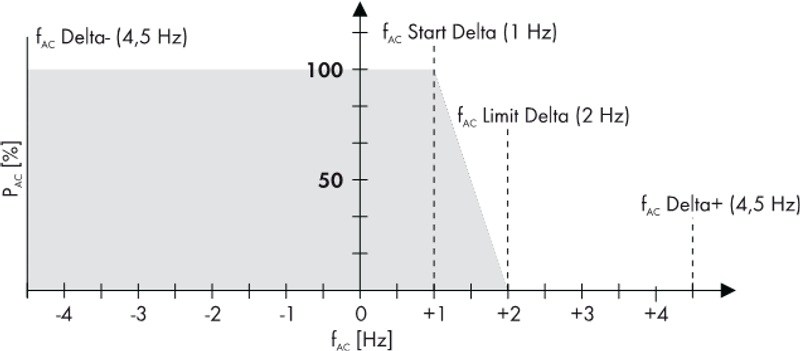

Operating principle of the FSPC The terms used have the following meanings:
- fAC refers to the base frequency of the stand-alone grid (here 50 Hz).
- fAC Delta– and fAC Delta+ refer to the maximum range relative to fAC in which the PV inverter is active.
- fAC Start Delta is the frequency increase relative to fAC, at which the frequency-based power control begins.
- fAC Limit Delta is the frequency increase relative to fAC, at which the frequency-based power control ends. The output power of the PV inverter at this point is 0 W.
If the value is below the fAC Delta– limit or above the fAC Delta+ limit, the PV inverters disconnect from the stand-alone grid.
If a diesel generator is operating in the stand-alone grid, the diesel generator determines the frequency, and the PV inverters react to certain changes in the diesel generator frequency. With diesel generators, the frequency of the output voltage under load is 50 Hz. For this reason, the PV inverters will in most cases supply their entire power to the stand-alone grid, even when the diesel generator is in operation.
If the current battery voltage is greater than the rated battery voltage and is also to be synchronized with a diesel generator, the Sunny Island will temporarily increase the frequency and the PV inverters will disconnect from the stand-alone grid via frequency shutdown (overfrequency). Afterwards, the Sunny Island synchronizes with the diesel generator.
Victron
Information about using Victron Multi or Quattro inverter chargers with AC coupling of PV .
https://www.victronenergy.com/live/ac_coupling:start
AC-coupled PV with Fronius PV Inverters and Victron Systems
This document describes how to setup Victron Energy-storage, Off-grid/Micro-grid and Backup systems with AC-coupled PV, using Fronius PV Inverters.
Ratio of PV inverters to battery inverter sizing
As the batteries become fully charged , the battery inverter/charger must be able to adjust frequency quickly in order to ensure system stability, for example if loads are switched off or generation increases quickly (for example from the sun coming out from behind a cloud).
Because of this the PV inverter to battery inverter ratio must follow the following rules:
For Victron inverter chargers (Multiplus or Quattro)
The max PV inverter AC power must be equal or less than the VA rating of the Victron inverter/charger
PAC max of the PV inverter ≤ PAC nom of the Victron inverter/charger
For SMA Sunny Island inverters
In off-grid systems, the nominal AC power of the PV system must not be more than double the nominal AC power of the Sunny Island inverters.
PAC max of the PV inverter ≤ 2 x PAC nom of the Sunny Island
Products
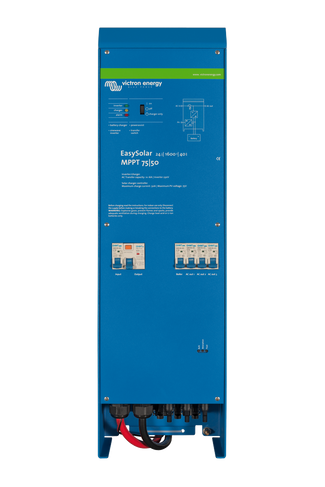
Victron Inverters and Inverter/Chargers
Victron off-grid inverters and inverter/chargers have a reputation for technical innovation, reliability & quality.
View collection